Three under-the-radar signings that you and I might have missed (Part 1)
It's the early days of the 2025 summer transfer window and some clubs have already made their first moves on the market.
Welcome to a new series where I try and cover interesting and under-the-radar transfers that have happened across the 2025 summer transfer window! For most transfers that involved big names and/or big clubs, there should be plenty of attention and coverage from mainstream media, and you do not need another place talking about the same thing and analysing the same stuff that are posted on pretty much all of football’s main news outlets. Meanwhile, transfers of young players (particularly under-21s) have been and are being extensively covered by the amazing team of SCOUTED Football, where they also provide extensive analysis of players for the future, so check them out if you haven’t.
But then, what happens to the players in between those two groups? The ones who are not that well-known and are too old to be considered as “young talents”? Well, that is the aim of this (potentially long) series, to give the spotlight to players who I think deserve more attention for their moves during this window. This is also going to be a minimal effort series just like “Quick Thoughts from…”, but my definition of “minimal effort” is still at least do a bit of due diligence for everything, and for this series, it’s doing data scouting using FBRef and Fotmob’s data and utilise existing knowledge to provide some insights about each player’s performance from the 2024-25 season and how they will fit into their new clubs.
So, without further ado, let’s start with our first three players for this edition!
Ísak Bergmann Jóhannesson
(Fortuna Düsseldorf → 1. FC Köln)
It feels like a while since the name Ísak Bergmann Jóhannesson was on everyone’s mind, particularly because of his status as a Football Manager wonderkid, which is why this move feels under the radar for me. When the young Icelandic-English chose 2. Bundesliga side Düsseldorf as his first club outside of Denmark, there were surprised reactions as he was touted to move to much bigger clubs across Europe. Yet, after two seasons in Germany, that decision might turn out to be a good one for Jóhannesson. He still played first-team football regularly for a promotion-chasing side and in a league that was at his level while also escaped the attention and pressure from being at a big club.
While Düsseldorf lost the promotion/relegation playoff during the 2023-24 season and only finished 6th in an extremely tight 2024-25 season, Jóhannesson remained a key player for Daniel Thioune’s side throughout both seasons as he made a combined total of 69 appearances in all competitions. During that time, he showed his versatility by playing as a single #10 in the 4-2-3-1, one of the two #10s in the 3-4-2-1, and one of the two #6s/#8s in the same two formations. At times, he also appeared on the right-hand side to fill in the right winger spot. But no matter where he played, he still produced a consistent and good performance for Düsseldorf.
Jóhannesson finished his first season in Germany with 7 goals and 9 assists, and he stepped up a bit more in his second season with 7 non-penalty goals (+4 penalties) and 3 assists. On the surface, these numbers are not very impressive, but considering he is only 22 years old (at the time of writing) and was playing abroad for the first time in his career, his quality has not diminished one bit from his time at København.
His advanced shooting and passing stats across both seasons also suggest the same, according to Opta/Fotmob. The Icelandic midfielder still overperformed his non-penalty expected goals (0.13 npxG for both seasons), but he took more shots than last season (1.7 shots/0.76 on target compared to 2023-24’s 1.35 shots/0.34 on target), and those numbers suggest that he was willing to get himself into goal-scoring opportunities more often and was able to score from tougher opportunities. Jóhannesson’s chance creation numbers also remained consistent across both seasons, with 1.61 chances created and 0.16 expected assists per 90s in 2024/25 and 1.65 chances created and 0.22 expected assists per 90s in 2023/24. Both of these numbers suggest that, even though there was a slight decrease in his assists (probably due to Shinta Appelkamp stepped up last season), Jóhannesson was still very reliable in creating chances for his teammates.
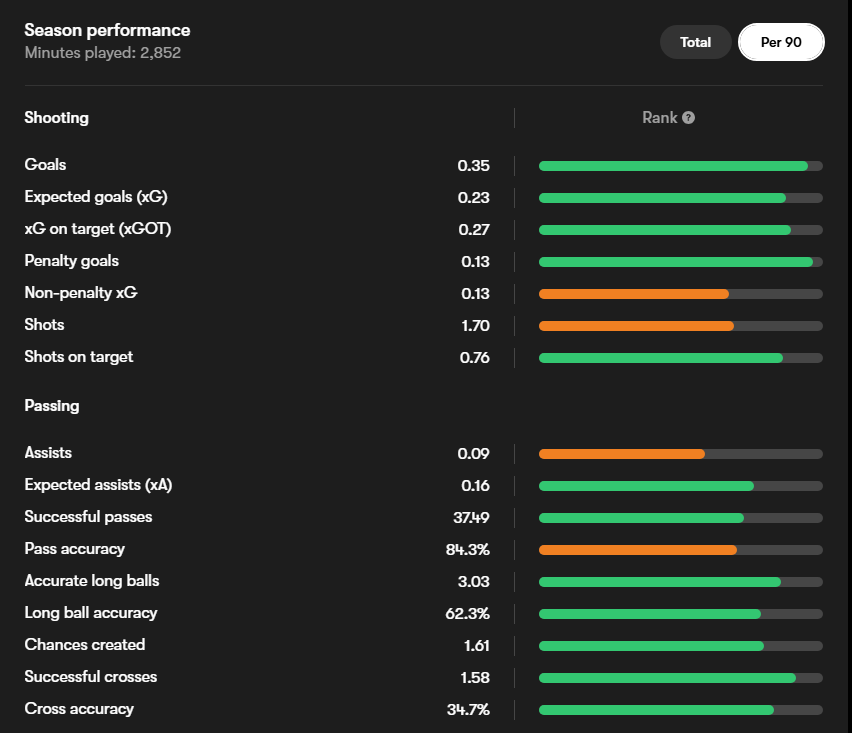
His defending stats from both seasons suggest that he might not be someone who is good at getting stuck into challenges and regain possession for the team. This won’t be a huge problem if he plays as a #10. But if Jóhannesson plays as a defensive midfielder or a central midfielder, he will need to be paired up with another midfielder who is more defensive-minded to compensate for his inability to make tackles and regain possession on a regular basis. At Düsseldorf, he had the support of French midfielder Giovanni Haag, who also had a decent debut season for the club.
All of this to say that his move to one of Bundesliga’s two newly-promoted sides, Köln, is nothing short of a bargain. Die Effzeh have quietly confirmed the departure of Austrian midfielder Dejan Ljubičić on a free transfer and Jóhannesson seems to be the perfect replacement who will accompany defensive midfielder Eric Martel and attacking midfielder Denis Huseinbašić in a very promising and exciting midfield next season. What makes this deal even better for Köln is the fact that they got the Icelandic midfielder’s signature by triggering his €5.5million release clause(!), which is an absurd price for a player of his quality.
The problem, which will be a short-term one, is that it’s unclear where and how he will fit into his new club…because they currently do not have a manager at the time of me writing this article. When Gerhard Struber was sacked in May, the club called upon the return of Friedhelm Funkel on an interim basis. After the season finished, they decided to not continue with the 71-year-old even though he guided the club to the 2. Bundesliga title and (hopefully!) let him enjoy his retirement.
Rumours have circulated about Köln’s preference of hiring Paderborn’s manager Lukas Kwasniok to the hotseat at the RheinEnergie Stadion, which is a fascinating prospect in itself to see the style of football that Kwasniok has used at Paderborn in the Bundesliga. But no matter who will be taking charge of Köln next season, Jóhannesson will definitely be on my list of players to watch for the next Bundesliga season as he makes the step up to a top 5 European league for the first time in his career.
Sem Steijn
(FC Twente → Feyenoord Rotterdam)
From one goal-scoring midfielder to another. Twente’s Sem Steijn has been an anomaly in the past two Eredivisie seasons because of his goal-scoring ability. Steijn finished the 2023-24 season with 17 goals and placed 5th in the golden boot race, behind some names that you might have heard of like Vangelis Pavlidis (29 goals), Luuk de Jong (29), Santiago Giménez (23), and Brian Brobbey (18). All aforementioned players, along with the two players behind him (his Twente teammate Ricky van Wolfswinkel (16) and Lennart Thy (13)), are all strikers by the way, which makes his record stood out even more.
With the season that just concluded, Steijn seemingly thought ‘I was not happy with finishing 5th in the golden boot race’, so he went on to score 24 goals and finished with the trophy in his hands. If you remove the 6 penalties that he scored, Steijn would still end up with 18 goals, two goals more than second-placed Igor Paixão (16) and four more than last season’s joint-winner and this year’s joint-third placed Luuk de Jong (12 + 2 penalties).
Steijn is not your conventional #10/attacking midfielder because his chance creation ability does not stand out compared to other attacking midfielders or wingers in FBRef’s Next 14 Competitions list, which includes players from the Belgian Pro League, English Championship, and Portuguese Primeira Liga to list a few. Even though he is still capable of creating chances for his teammates (demonstrated via his 7 assists this season), his shooting stats are what stood out almost immediately.
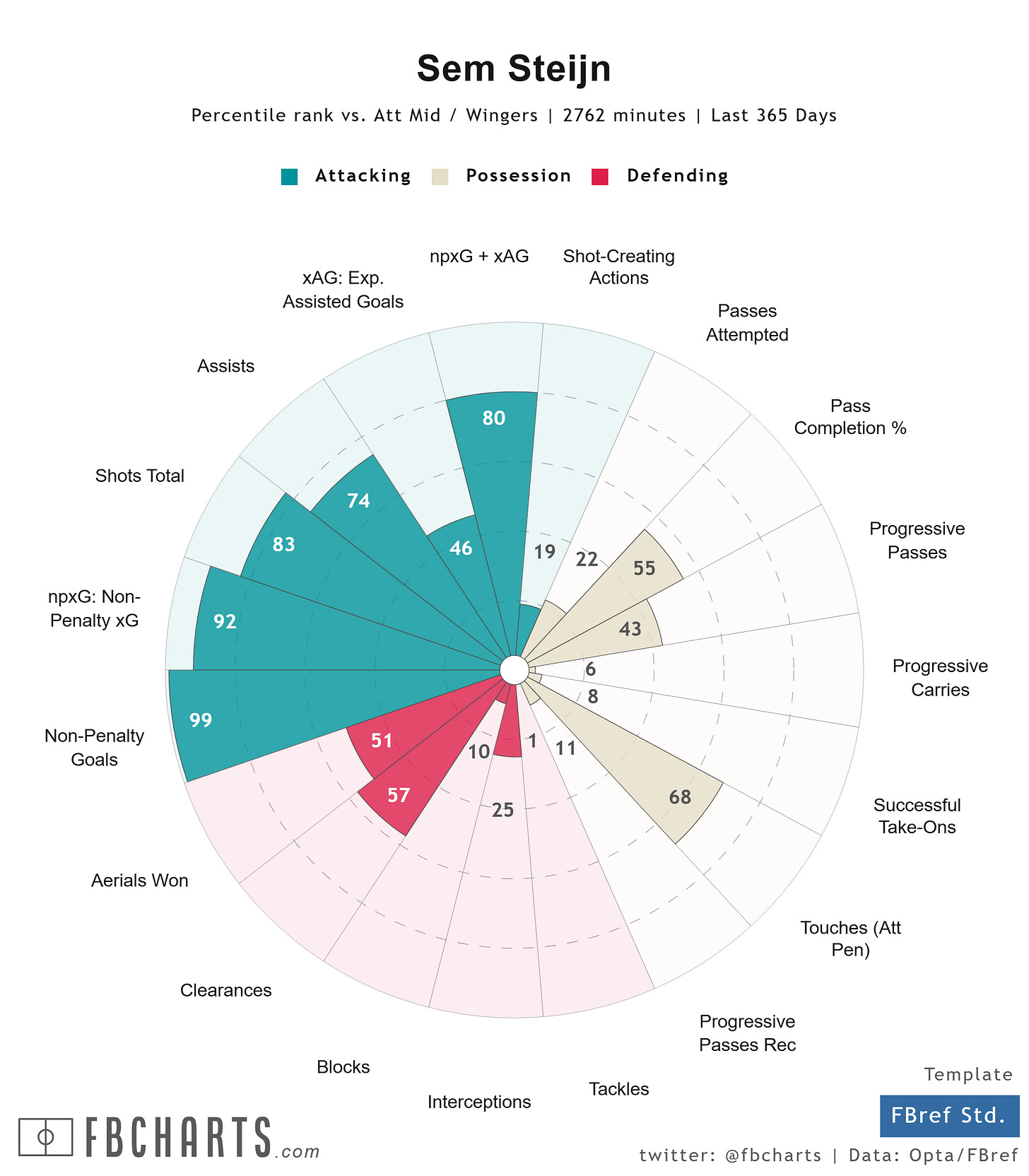
Since his move to Twente at the beginning of the 2022-23 season, Steijn carried his goal-scoring form from ADO Den Haag over and even took it to the next level. His non-penalty goals per 90s improved season after season, going from 0.45 npG in his first season, to 0.59 npG in his second season, and finished with 0.58 npG in his third season with Twente, according to Opta/FBRef. Interestingly, his shot volume and accuracy remained fairly consistent, with his shots on target percentage never dropped below 34% and reached its highest this season at 40.2%. Along with his constant overperformance of his expected numbers, these stats highlight his constant improvement in front of goal and his ability to get to good goal-scoring positions.
In Twente’s 4-2-3-1 system, Steijn was usually used as the #10 sitting just behind former Norwich City striker van Wolfswinkel. As mentioned, instead of taking on a playmaker role, Steijn was more of a second striker who usually crashed the box and sniffed out spaces where he could be to receive the ball inside of the penalty box and score. Besides from Steijn leading the league for total distance covered with 420 kilometres and ranked 68th (4.04 per 90s) for touches inside the penalty box, there are no other publicly available metrics that I can use to highlight his off-ball movements. So, this is merely my own judgement from the data as I have not had the chance to watch Steijn playing.
Meanwhile, Steijn’s location and goal mouth shot maps present two trends that I think are quite interesting about him. Firstly, as mentioned above, his preference of constantly being present inside of the box is definitely on showcase with the location shot map since most of his shots and goals were taken inside of the penalty box. A lot of his goals were also scored down the middle of the box, which definitely increased the likelihood of scoring compared to if those goals were scored to both sides of the box.
Secondly, the goal mouth shot map highlighted the placement of his on-target shots and goals scored. Whenever he chose to shoot the ball to the left of the goal, those shots tended to be placed slightly higher up the goal mouth. Meanwhile, for most of his goals that were placed to the right-side of the goal, they were placed very low and closer to the bottom right corner. This seemed to be an intentional decision because it happened on so many occasions, which makes it hard to believe that it was a coincidence, but also an understandable one since most of these goals would require the opposition’s goalkeeper to be at full stretch to save them or would have little reaction time.

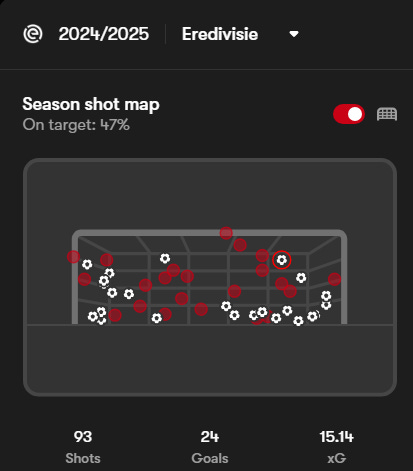
Even though Steijn comes across as slightly one-dimensional, he is still very good at being a lethal goalscorer in front of goal and is intelligent at doing what he is good at. He has definitely gone strengths to strengths for each season that he spent at Twente while also played an important role in pushing the club up the league table to challenge for a European spot. Letting Steijn join Feyenoord next season will be a big loss for Twente, and even though they are getting more than a reported €10million back, replacing an anomalous player like him, or at least his goalscoring record, will be a very, very big task.
For Feyenoord, however, they will be getting a lethal goalscorer who they will hope can become their next star attacking player. The club have not been close to competing at the top with Ajax and PSV as they finished third last season in the Eredivisie, ten points away from Ajax’s second place. After Giménez and Yankuba Minteh’s departures at the end of the 2023-24 season, Feyenoord relied on Paixão to bring in the goals as the Brazilian winger was involved in a total of 26 goals (16 goals + 10 assists) this season, that was 34.2%, more than one-third of Feyenoord’s total goals scored.
With Paixão now attracting interests all across Europe, Feyenoord will have to hope that Steijn can step up to replicate that record after a season where their strikers Ayase Ueda (7 goals scored) and Julián Carranza (4 goals scored) have been okay at best, while Stephano Carrillo was still trying to adapt to the league. On the touchline, Brian Priske was unable to keep the team at the level that Arne Slot left behind (though it was always going to be a tough job), but Robin van Persie had overseen somewhat of a decent job and there are hopes that the legendary Dutch striker can carry that form into the new season.
Steijn should be somewhat familiar with RvP’s system of a 4-2-3-1, which should mean that he will most likely be playing in the #10 position next season right behind the lone striker (whoever that will be between Ueda, Carranza, and Carrillo). He will have the support from both wings, with Antoni Milambo, Calvin Stengs, Luka Ivanušec, and Anis Hadj-Moussa all able to create goal-scoring chances from out wide. Behind him, Hwang In-beom, Jakub Moder, Oussama Targhalline, Quinten Timber, and Ramiz Zerrouki are also able to create a few chances here and there as well. There should be enough midfield quality in Feyenoord’s squad that Steijn can blend in and provide something different in front of goal, something that Feyenoord have been and will be desperately looking for with the departures of many of their main goal-scoring threats.
Benedict Hollerbach
(1. FC Union Berlin → 1. FSV Mainz 05)
Since their return to the Bundesliga, Union Berlin have gained a reputation to be a “striker hoarder” (or, at least, that’s the nickname that I have given them). But there is a perfectly good reason for why I gave them that nickname. From the 2019-20 Bundesliga season, the list of strikers who have played for the red side of Berlin has definitely gotten lengthier every single season. This list includes, but not limited to, Sebastian Andersson, Sebastian Polter, Anthony Ujah, Marius Bülter, Marcus Ingvartsen, Max Kruse, Joel Pohjanpalo, Cedric Teuchert, Taiwo Awoniyi, Andreas Voglsammer, Sven Michel, Kevin Behrens, Jordan “Pefok” Siebatcheu, Sheraldo Becker, Jamie Leweling, Mikkel Kaufmann, Kevin Volland, Chris Bedia, Yorbe Vertessen, Benedict Hollerbach, Ivan Prtajin, Tim Skarke, Andrej Ilić, Marin Ljubičić, and soon-to-be Oliver Burke.
In total, that is a whopping 24 strikers across the span of six seasons (not counting Burke), averaging out at 4 strikers per season. Some have been a hit, but some have also been a miss. The average number also made it seemed a bit more reasonable, but it is important to remember that some of the names above have multi-year contracts with Union and have stayed beyond a single season. I might do a deep dive into Union’s striker situation in a future article, but we are here to talk about one of those 24 names listed.
When Union signed Hollerbach from 3. Liga side Wehen Wiesbaden for the 2023-24 season, the young German striker only had a single first-team season where he scored more than 3 goals, which was the 2022-23 season that had just finished. He finished that season with 14 goals, and while I don’t want to downplay his achievement, he only finished joint-5th on the top scorer table and one goal short of his teammate and future unwanted Union striker Ivan Prtajin. The positive thing about the move was that Hollerbach was still quite young and could take his time to adapt to the top flight…which absolutely did not happen like many had thought the situation would turn out.
In a season where Union took part in three competitions, including the Champions League for the first time in their history, and managerial inconsistency played a huge part as then-long-serving manager Urs Fischer stood down in November to then be replaced by Nenad Bjelica, who then got sacked in May, rotations and changes happened very frequently amongst the team. Then, January rolled around, and Union bid farewell to both Sheraldo Becker and Kevin Behrens, which happened to fast track Hollerbach’s progress to be one of the starting strikers for the team.
As expected, Hollerbach was not very effective in front of goal in his season making the jump to the top flight. He finished the 2023-24 season with 5 goals, with all five of them came in the Bundesliga. The 2024-25 season rolled around and brought with it more managerial inconsistency as Union started the season with Bo Svensson until December, who was then replaced by Steffen Baumgart. But amidst that chaos, Hollerbach now found himself to be the starter with Prtajin nowhere close to the starting lineup, Pefok and Vertessen became backup strikers and then left in the winter, only for both Ilić and Ljubičić to arrive and take their places. The only player who came close to challenge Hollerbach for a starting spot was Skarke, but the former Darmstadt loanee still could not match the young German striker for minutes played. After the conclusion of the 2024-25 season, Hollerbach finished with 2540 minutes played in the Bundesliga, the fourth most in the team and was only beaten by the centre-back duo Danilho Doekhi and Diogo Leite, and veteran midfielder Rani Khedira.
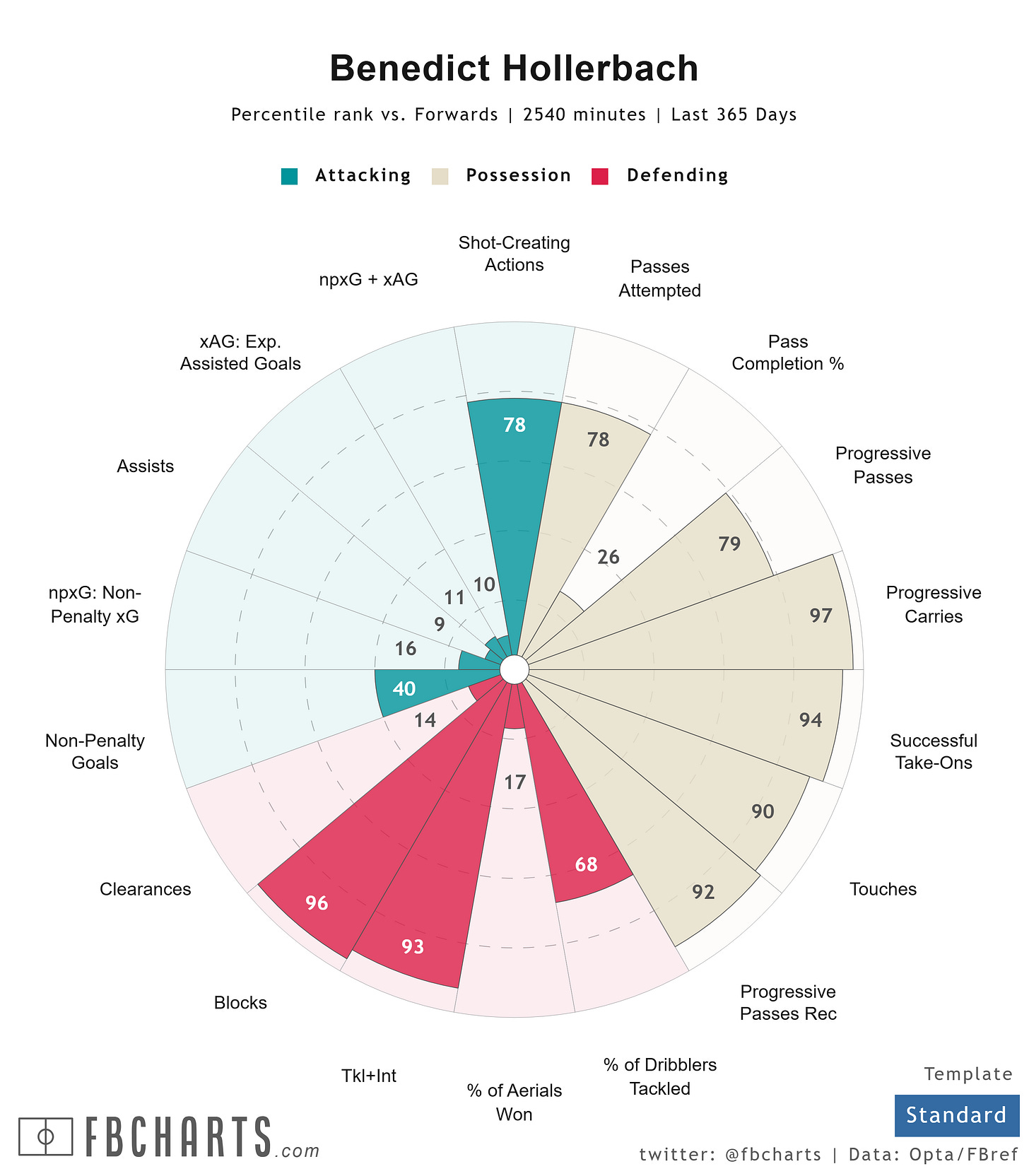
The one thing that Hollerbach impressed me was his work rate and willingness to do the dirty work when his team did not have the ball, and that attribute proved to be very important for a transition-focused side like Union Berlin. At times, he was the focal point for the team when they pressed the opposition, either from inside the final third or after they fell back into a mid-block inside of the middle third. Hollerbach would chase the opposition’s defenders in accordance with the team’s pressing triggers and also got stuck into challenges to regain possession for his team.
This will be an attribute that Bo Henriksen and Hollerbach’s new side, Mainz 05, will be glad to hear. Henriksen prefers to use a 3-4-2-1/3-4-3 to press the opposition from inside of their half, which will be something that Hollerbach is already familiar with given that it was also the formation that Henriksen’s predecessor, Bo Svensson, also preferred to use at both Mainz and Union while also applied a very similar playing style. It is possible that Hollerbach will not be a focal point for Mainz’s press should Jonathan Burkardt stays at the Mewa Arena at least for next season as he might play as one of the two attacking midfielders behind Burkardt instead of staying up front.
Compared to other strikers in the top 5 European leagues, Hollerbach’s goal-scoring ability did not stand out, but he still finished the 2024-25 season as Union’s top scorer with 9 goals across all competitions despite a late resurgence from Ilić, who finished with 7 goals. There is an argument to be made that Hollerbach was slightly wasteful with his chances considering he made 2.69 shots per 90s and only 31.6% of his total shots attempted were on target. Combine that with his non-penalty xG per 90s, which was 0.25 npxG, and his xG per shot was only 0.09 xG, which would prove that argument to be true.
However, at Mainz, he would not have to worry about being the sole goalscorer too much. Again, everything relies on whether Burkardt will stay with Mainz or not, but Henriksen’s side will also have Paul Nebel, Lee Jae-sung, and a young Nelson Weiper to share that responsibility. I don’t see Hollerbach being considered as one of the options for the lone striker spot if Burkardt stays (again, that’s the key point) and Weiper continues his development. In that case, Hollerbach will provide Mainz with a solid rotational option for one of the two #10s spot, or even a slight upgrade from Lee Jae-sung given the Korean midfielder’s age (he is 31 by the way!). Hollerbach’s arrival might even allow Jae-sung to drop deeper into one of the two defensive/central midfielder spots.
While he was definitely not one of the tallest strikers that Union had throughout the last two seasons, Hollerbach made up for that by being one of the hardest workers on- and off-the-ball. I have mentioned his off-ball work rate just above, but in Union’s 3-5-2/3-4-2-1 system, he also proved his quality by being a great ball carrier and progressor from inside the opposition’s half. While playing in a typical English striker pairing of a target man-small forward, Hollerbach made good use of his pace to outrun the opposition’s defenders while also carried the whole team forward to get numbers inside of the penalty box. His dribbling ability also helped him get past defenders, putting him good positions to create and convert goalscoring chances.
This will be very helpful for Mainz, but maybe in a slightly different way. Again, if Burkardt stays, he is expected to be the one to lead the line for Henriksen’s side, which should take the pressure off Hollerbach. From one of the two #10 spots, his pace can be useful for being a box crasher who arrives late into the penalty box and finds pockets of space where he can receive a cross or through ball from teammates around him. Hollerbach can also be more effective while drifting out wide with the ball to draw opposition’s defenders out of their positions, opening up spaces for the wing-back behind him to overlap into or opening up channels for other attackers to make runs into.
Obviously, everything that I said here relies on whether Burkardt stays with Mainz or not. It is not even the start of the summer window yet, and while there have not been any concrete rumours as of me writing this article, there is a chance that a Premier League team or Bayern München will come swooping in at any point. In that situation, it means Mainz have predicted and braced themselves for Burkardt’s departure by bringing Hollerbach in early to fill in a similar role for a reported fee of €7.5million Euros.
In the current economy, signing a 24-year-old who has a bit more potential to further develop for that fee can be seen as a bargain. Mainz have taken one of their rivals’ top scorer even though Union themselves have prepared for Hollerbach’s departure by signing Oliver Burke on a free and Ilić on a permanent basis, but that should still unsettle Union in some ways. Whether Hollerbach will be a success at Mainz or not, that is hard to say. He did show a bit of promises at Stadion Försterei, but he still lacked that composure in front of goal and a bit of teamwork to be less selfish when presented with a chance that would be better to give to a teammate. Rushing him into the starting striker spot should Burkardt departs might be a bit too soon considering Mainz will also be playing in the Europa League next season, and especially when Weiper is also not ready to take on that responsibility. But if Mainz can somehow retain Burkardt for next season, they might have a very interesting and young attacking quartet to watch, with Burkardt leading the line, Hollerbach and Nebel providing support, and Weiper waiting in the wings.
There have been a few more interesting transfers that I was tempted to cover in this edition, but unfortunately, I can only pick three. With June 1st rolled by, many clubs will be looking to kickstart their transfer business very soon, which will lead to many interesting moves being made over the next few weeks. When that happens, I will be ready (probably in a fortnight or so) to write up the next part of this series.
I also intended for this series to be a bit short, but that intention was not achieved as I have somehow squeezed in three mini, bite-size scout reports. But I hope you enjoy reading this series because I quite like writing mini data scout reports like these, and it is also a chance for me to search for players who I might not be aware of and do a slightly deep dive on them. Until the next part, see you very soon!


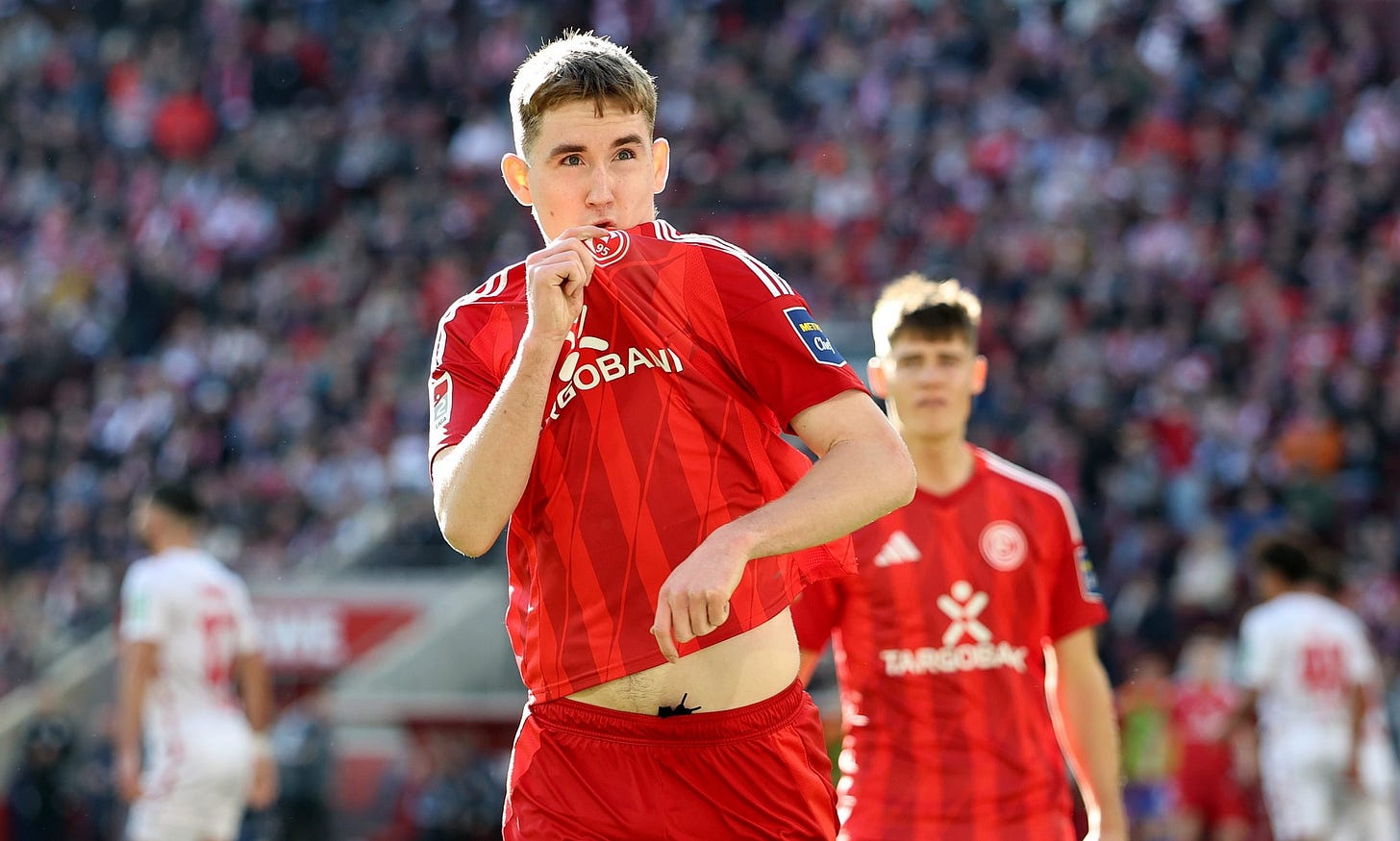
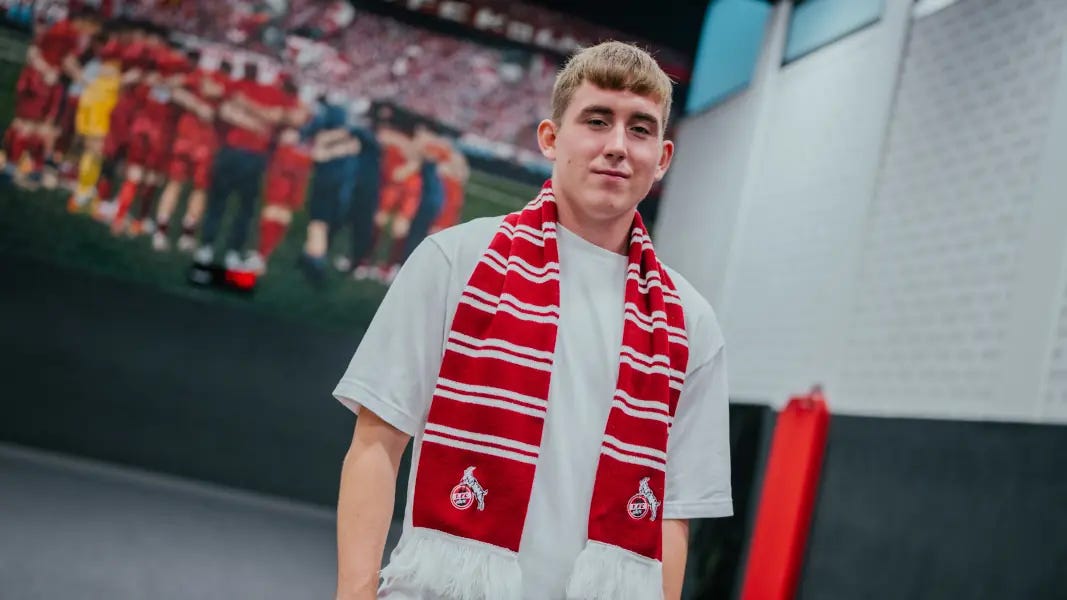
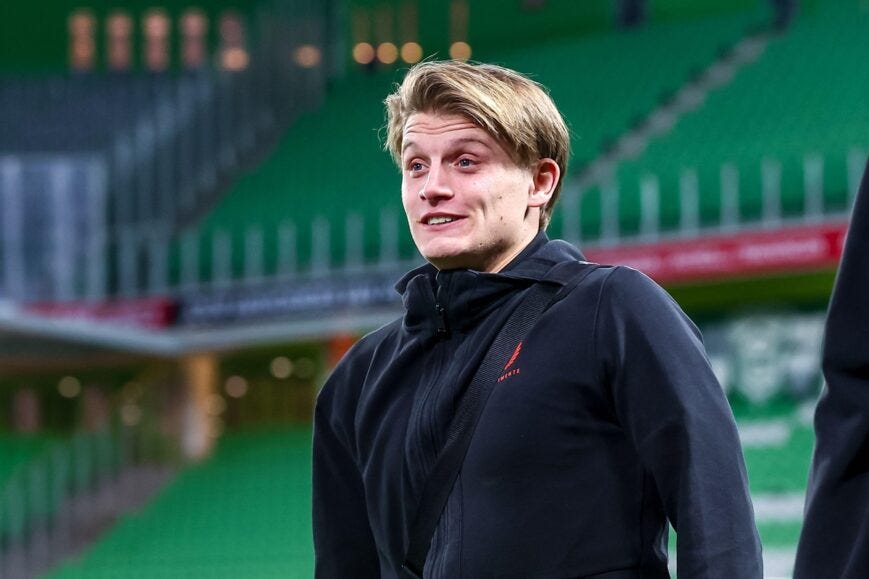
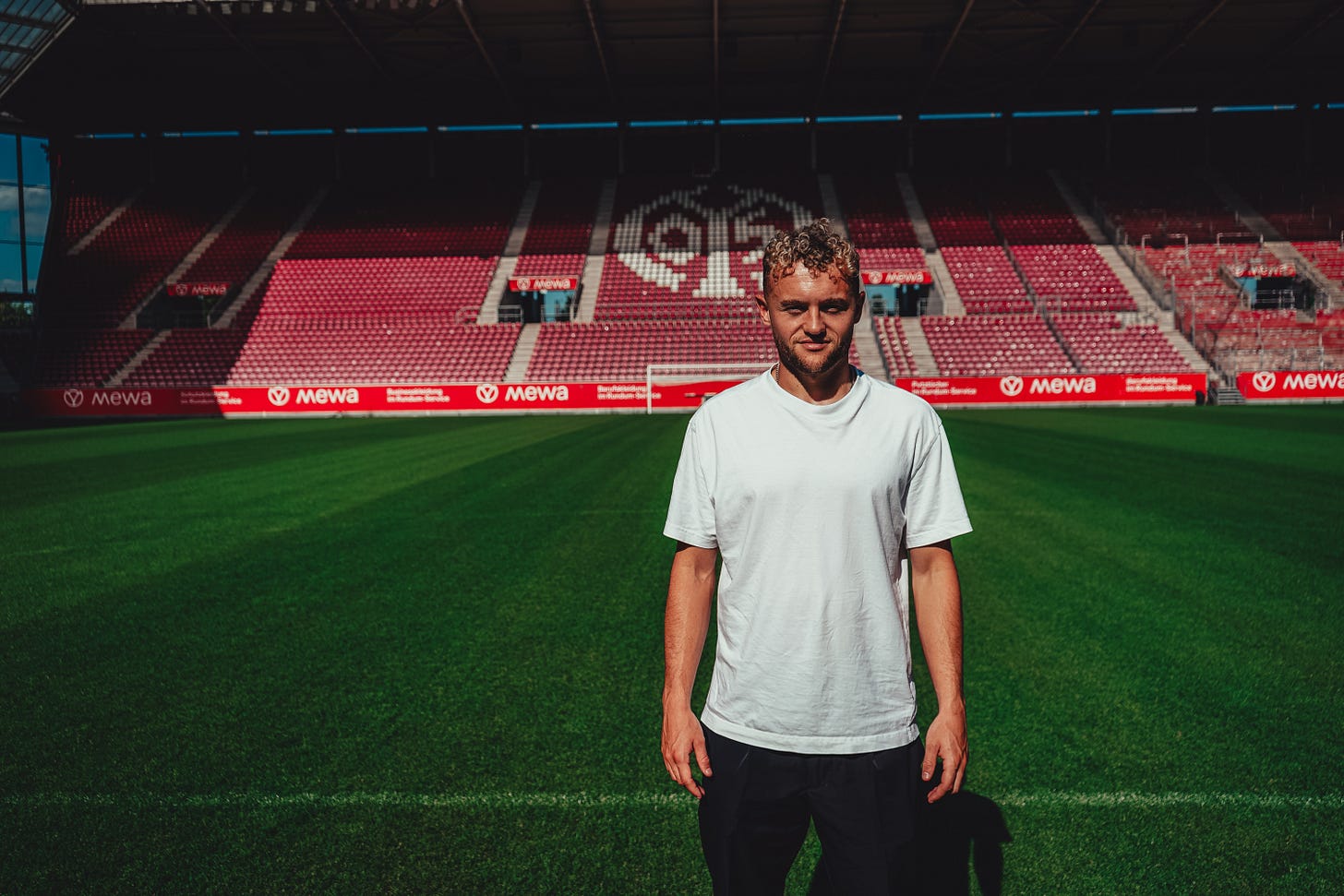
Enjoyed reading this. Hollerbach is someone I discovered only recently from starting a new Football Manager save with Union Berlin, and he's really frustrating as he misses a lot of chances. Wanted to sign Jóhannesson some seasons later but Arsenal got him first. But got Nebel on a free from Mainz. 😃 Got an eye on Burkardt too.
Forgive my detour, for I enjoyed reading this piece. And yeah it's a mini scout report on each player. The right kind of depth. And wow, Steijn, wow!